
Concept explainers
Which of the molecules and ions given in Problem 21.15 are aromatic according to the Hückel criteria? Which, if planar, would be antiaromatic?
21.15 State the number of 2p orbital electrons in each molecule or ion.
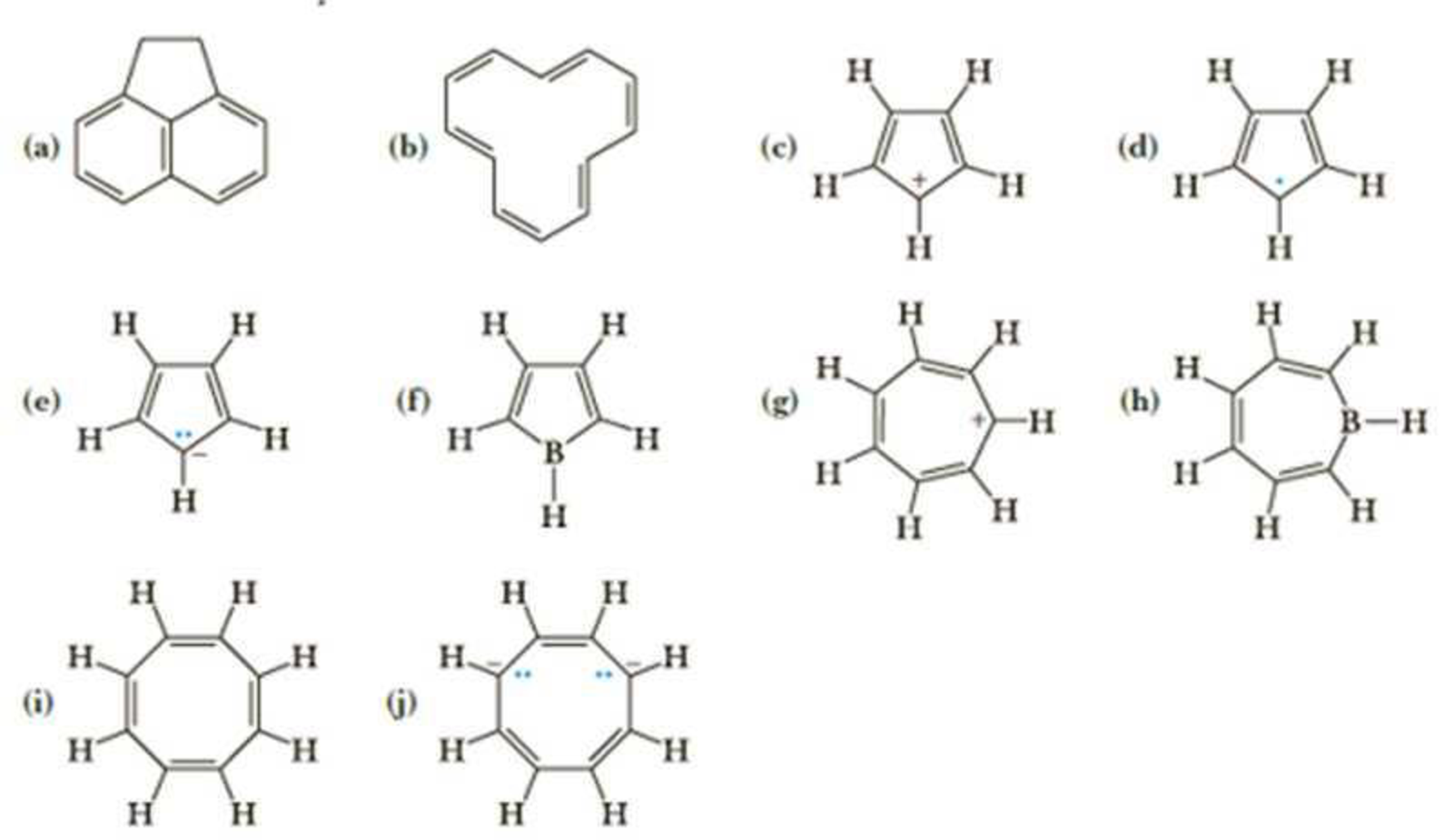
(a)
Interpretation:
Which of the given molecules and ions are aromatic according to the
Concept Introduction:
The term aromaticity means “extreme stability”. So, aromatic compounds are highly stable compounds whereas anti-aromatic compounds are highly unstable compounds.
The aromatic compounds and anti-aromatic compounds can be distinguished based on Huckel’s rule of aromaticity.
Huckel’s rule of aromaticity is
If
If
If
Explanation of Solution
The given compound is shown here:
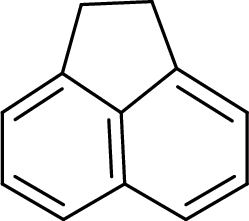
There are five
Huckel’s rule of aromaticity
(b)
Interpretation:
Which of the given molecules and ions are aromatic according to the
Concept Introduction:
The term aromaticity means “extreme stability”. So, aromatic compounds are highly stable compounds whereas anti-aromatic compounds are highly unstable compounds.
The aromatic compounds and anti-aromatic compounds can be distinguished based on Huckel’s rule of aromaticity.
Huckel’s rule of aromaticity is
If
If
If
Explanation of Solution
The given compound is shown here:
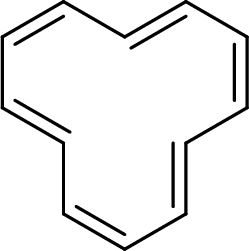
There are six
Huckel’s rule of aromaticity
The given compound is planar. So, it is expected to possess aromaticity due to the expected effective delocalization of
(c)
Interpretation:
Which of the given molecules and ions are aromatic according to the
Concept Introduction:
The term aromaticity means “extreme stability”. So, aromatic compounds are highly stable compounds whereas anti-aromatic compounds are highly unstable compounds.
The aromatic compounds and anti-aromatic compounds can be distinguished based on Huckel’s rule of aromaticity.
Huckel’s rule of aromaticity is
If
If
If
Explanation of Solution
The given compound is shown here:
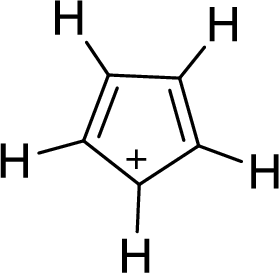
There are two
Huckel’s rule of aromaticity
The given compound is planar. So, it is expected to possess aromaticity due to the expected effective delocalization of
(d)
Interpretation:
Which of the given molecules and ions are aromatic according to the
Concept Introduction:
The term aromaticity means “extreme stability”. So, aromatic compounds are highly stable compounds whereas anti-aromatic compounds are highly unstable compounds.
The aromatic compounds and anti-aromatic compounds can be distinguished based on Huckel’s rule of aromaticity.
Huckel’s rule of aromaticity is
If
If
If
Explanation of Solution
The given compound is shown here:
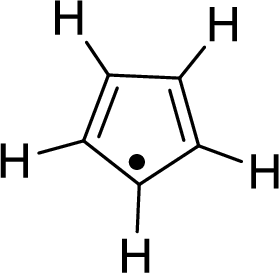
There are two
Huckel’s rule of aromaticity
(e)
Interpretation:
Which of the given molecules and ions are aromatic according to the
Concept Introduction:
The term aromaticity means “extreme stability”. So, aromatic compounds are highly stable compounds whereas anti-aromatic compounds are highly unstable compounds.
The aromatic compounds and anti-aromatic compounds can be distinguished based on Huckel’s rule of aromaticity.
Huckel’s rule of aromaticity is
If
If
If
Explanation of Solution
The given compound is shown here:
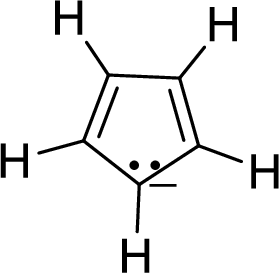
There are two
Huckel’s rule of aromaticity
(f)
Interpretation:
Which of the given molecules and ions are aromatic according to the
Concept Introduction:
The term aromaticity means “extreme stability”. So, aromatic compounds are highly stable compounds whereas anti-aromatic compounds are highly unstable compounds.
The aromatic compounds and anti-aromatic compounds can be distinguished based on Huckel’s rule of aromaticity.
Huckel’s rule of aromaticity is
If
If
If
Explanation of Solution
The given compound is shown here:
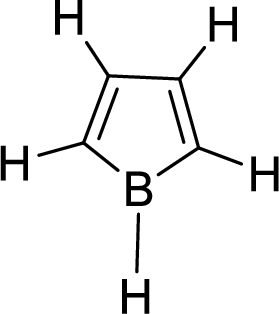
There are two
Huckel’s rule of aromaticity
The given compound is planar. So, it is expected to possess aromaticity due to the expected effective delocalization of
(g)
Interpretation:
Which of the given molecules and ions are aromatic according to the
Concept Introduction:
The term aromaticity means “extreme stability”. So, aromatic compounds are highly stable compounds whereas anti-aromatic compounds are highly unstable compounds.
The aromatic compounds and anti-aromatic compounds can be distinguished based on Huckel’s rule of aromaticity.
Huckel’s rule of aromaticity is
If
If
If
Explanation of Solution
The given compound is shown here:

There are three
Huckel’s rule of aromaticity
(h)
Interpretation:
Which of the given molecules and ions are aromatic according to the
Concept Introduction:
The term aromaticity means “extreme stability”. So, aromatic compounds are highly stable compounds whereas anti-aromatic compounds are highly unstable compounds.
The aromatic compounds and anti-aromatic compounds can be distinguished based on Huckel’s rule of aromaticity.
Huckel’s rule of aromaticity is
If
If
If
Explanation of Solution
The given compound is shown here:
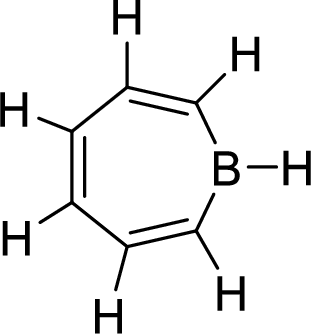
There are three
Huckel’s rule of aromaticity
(i)
Interpretation:
Which of the given molecules and ions are aromatic according to the
Concept Introduction:
The term aromaticity means “extreme stability”. So, aromatic compounds are highly stable compounds whereas anti-aromatic compounds are highly unstable compounds.
The aromatic compounds and anti-aromatic compounds can be distinguished based on Huckel’s rule of aromaticity.
Huckel’s rule of aromaticity is
If
If
If
Explanation of Solution
The given compound is shown here:
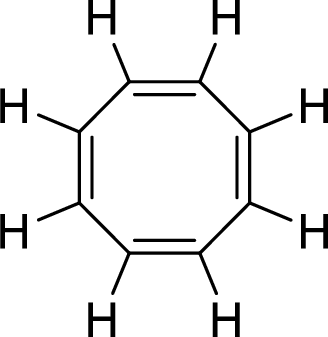
There are four
Huckel’s rule of aromaticity
(j)
Interpretation:
Which of the given molecules and ions are aromatic according to the
Concept Introduction:
The term aromaticity means “extreme stability”. So, aromatic compounds are highly stable compounds whereas anti-aromatic compounds are highly unstable compounds.
The aromatic compounds and anti-aromatic compounds can be distinguished based on Huckel’s rule of aromaticity.
Huckel’s rule of aromaticity is
If
If
If
Explanation of Solution
The given compound is shown here:
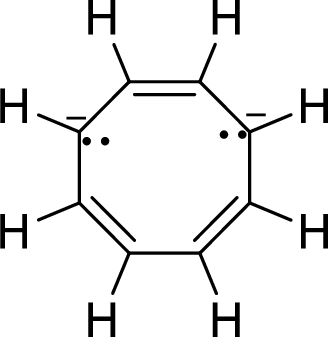
There are three
Huckel’s rule of aromaticity
Want to see more full solutions like this?
Chapter 21 Solutions
OWLv2 with MindTap Reader, 1 term (6 months) Printed Access Card for Brown/Iverson/Anslyn/Foote's Organic Chemistry, 8th Edition
- ( ME EX1) Prblm 27-28: Can you explain to me both prblms in detail and for prblm 28 what do you mean bi conjugated bi ponds and those structures I'm confused...arrow_forwardA. Determine the number of electrons in a system of cyclic conjugation (zero if no cyclic conjugation). B. Specify whether the species is "a"-aromatic, "aa"-anti-aromatic, or "na"-non-aromatic (neither aromatic nor anti-aromatic). (Presume rings to be planar unless structure obviously prevents planarity. If there is more than one conjugated ring, count electrons in the largest.) 1. A.Electrons in a cyclic conjugated system. 18 B.The compound is (a, aa, or na) a 2. A.Electrons in a cyclic conjugated system. 10 B.The compound is (a, aa, or na) naarrow_forwardWater is boiling at 1 atm pressure in a stainless steel pan on an electric range. It is observed that 2 kg of liquid water evaporates in 30 min. Find the rate of heat transfer to the water (kW).arrow_forward
- Could you please turn this into a complete Lewis dot structure formula for me so I can visualize it more clearly? and then do the explaining for the resonance structures that were given please.arrow_forwardCould you please turn this into a complete Lewis dot structure formula for me so I can visualize it more clearly? and then do the explaining for the question.arrow_forwardplease solve. If the answer is "no error" and it asks me to type something, and i typed a-helix, its always wrong.arrow_forward
- Can you please solve and explain this for me in a simple way? I cant seem to comprehend this problem.arrow_forwardPart I. Problem solving. Include all necessary calculations 13 provide plots and graphs. Complexation wl diphenyl carbazide (OPC) in acidic media is another type of sensitive photometric method used for the analysis of aqueous. hexavalent chromium. At 540nm the cherry-red complex as a result of DPC reaction w/ chromium can be photometrically measured. at this wavelength. - a 25mL The UV-vis analysis for the determination of nexavalent chromium in ground water sample is given below. The experiment was based on external calibration method w/ each measurement sample prepared are as follows lab sample analysis contained the standard 100 ppb croy cor groundwater sample, volumes used as indicated below), 12.50 mL of 0.02 M H2Soy and 5.50 ml of 100 ppm DPC (wi water to adjust final volume to 25-ml). The main stripping method was square wave voltammetry, following the conditions set in the main ASV experiment. Standard 100 Volumetric Groundwater H2SO4 0.20 M, flask Sample, mL ppb CrO4*, 100…arrow_forwardplease helparrow_forward
- Predict the products of the following reactions. Draw mechanism arrows for each step for a, b, and c. a.) HBr b.) HI H₂O H2SO4 d.) C12 HO H2SO4 1.) BH3 2.) H2O2, NaOHarrow_forwardK for the following reaction is 0.11 at constant temperature. If the equilibrium concentration of HCl is 0.5 M, what is the equilibrium concentration of NH3. NH4CI(s) ⇌ NH3(g) + HCI(g)arrow_forwardplease help by Draw the following structures (Lewis or line-angle drawing).arrow_forward
 Organic Chemistry: A Guided InquiryChemistryISBN:9780618974122Author:Andrei StraumanisPublisher:Cengage Learning
Organic Chemistry: A Guided InquiryChemistryISBN:9780618974122Author:Andrei StraumanisPublisher:Cengage Learning
 Organic ChemistryChemistryISBN:9781305580350Author:William H. Brown, Brent L. Iverson, Eric Anslyn, Christopher S. FootePublisher:Cengage Learning
Organic ChemistryChemistryISBN:9781305580350Author:William H. Brown, Brent L. Iverson, Eric Anslyn, Christopher S. FootePublisher:Cengage Learning



